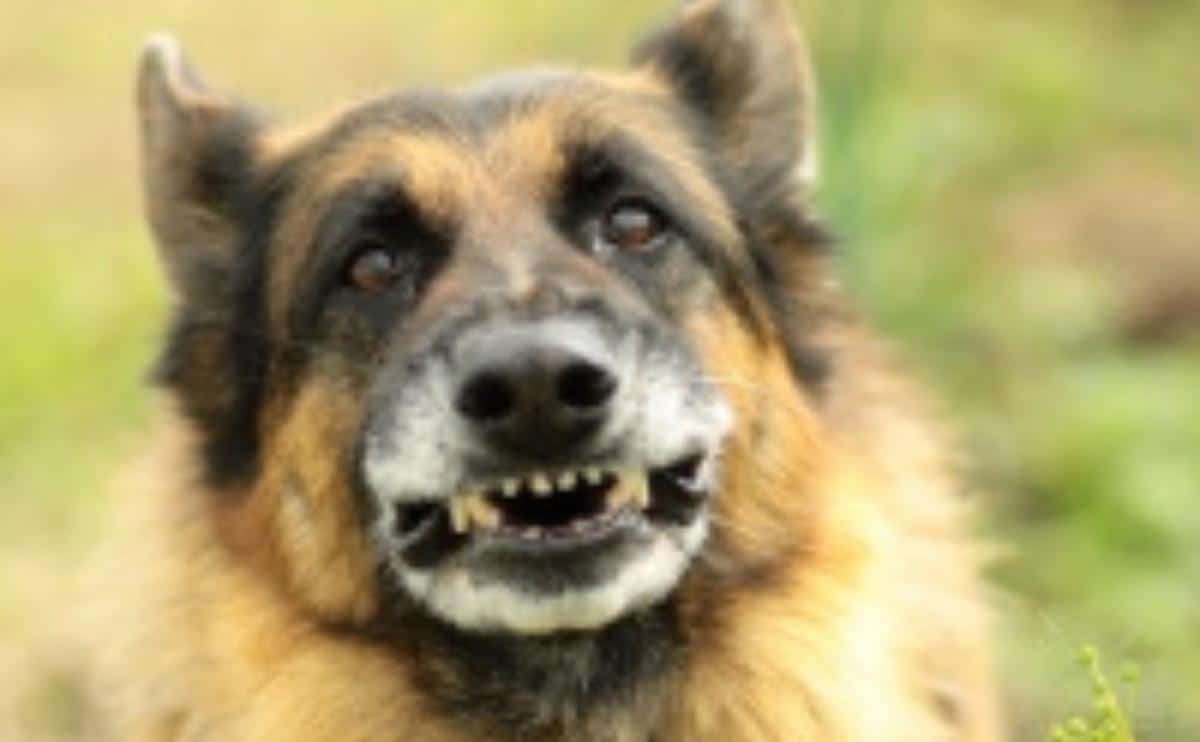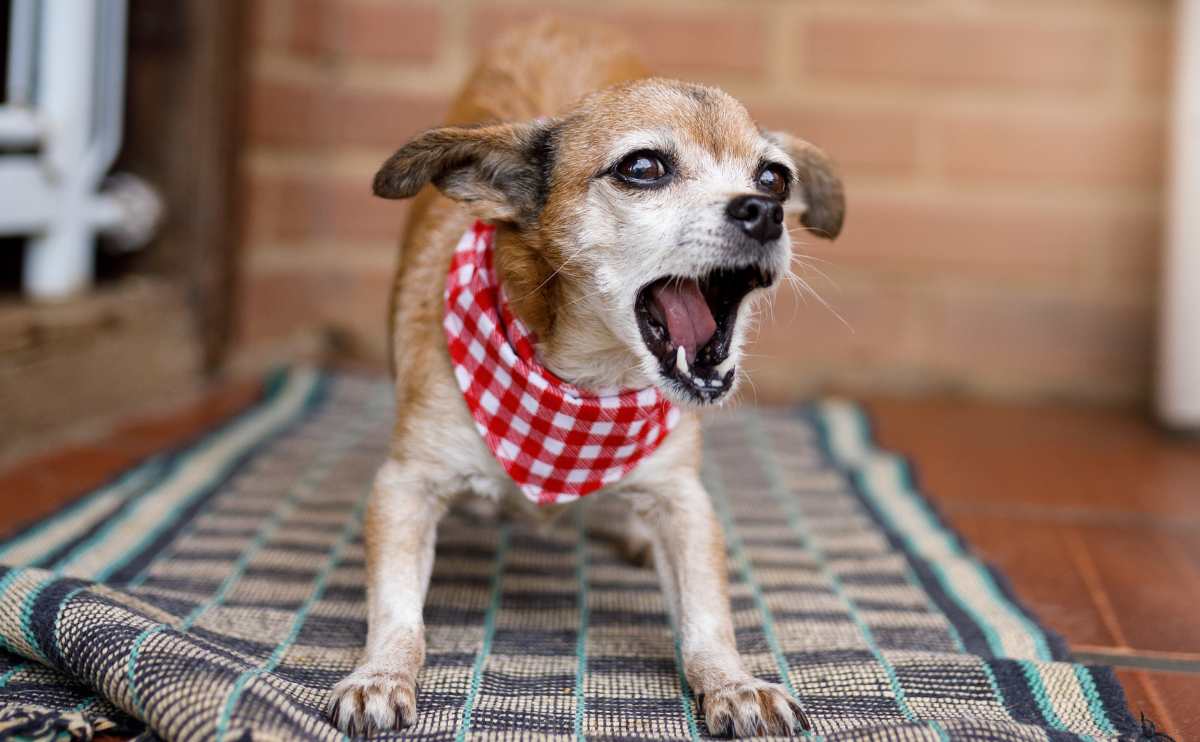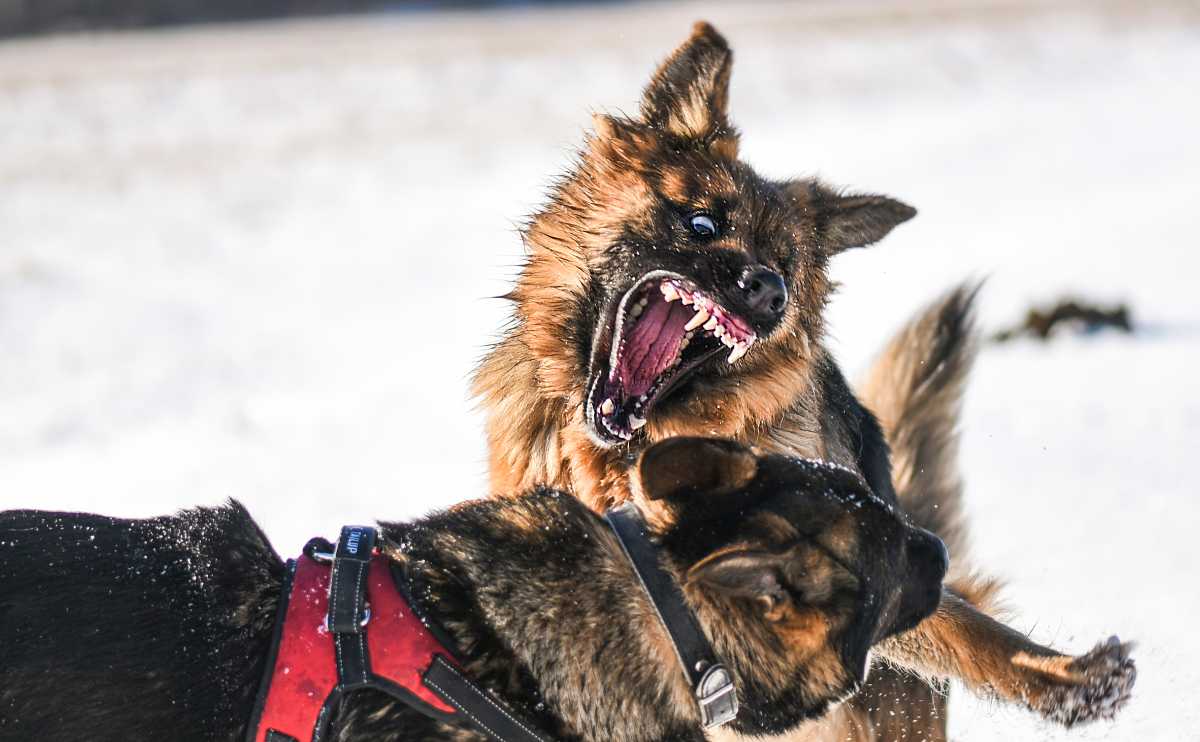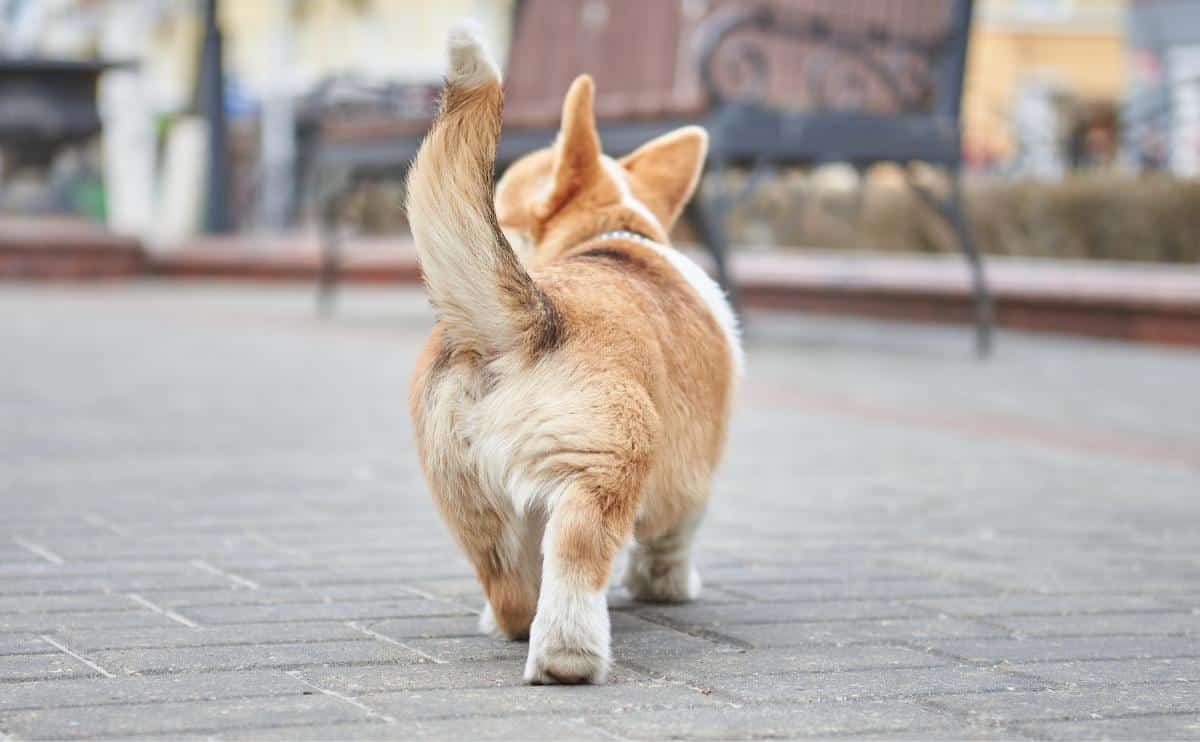When you purchase through links on our site, we may earn a commission. Here’s how it works.

Dogs can’t talk, but they have an effective way of communicating with their body language, showing signals to indicate their feelings. As we learn to recognize how dogs communicate, we can better understand what our furry friend is telling us. You don’t have to be Cesar Millan to know when a pup is happy, hurt, or angry. Dog facial expressions and dog tail and ear languages are ways to find out what your dog might be thinking.
What Is My Dog Trying To Tell Me?

There are four key mindsets that affect how a dog behaves:
- Aggressive
- Submissive
- Timid
- Excited
Sometimes, dogs show multiple signs together. For instance, they can show timid-aggressive behavior when a fearful canine bites someone who is entering their personal space. Another example is excited-submissive, when a dog is fiercely wagging his tail in anticipation of a treat. See below for a list of dog body languages as clues to decipher what your dog is trying to tell you.
1. Aggressive

- Clenched mouth – This shows that something is holding his attention. If that something is another canine, it might escalate to aggressive behavior.
- Raised hair on the back of his neck – Sometimes dogs play aggressively. The best way to tell whether he is playful-aggressive or angry-aggressive is by the hair on his back right behind the head. If the hair is up and stiff, it’s a sign of being angry and aggressive.
- Crouched down – If a dog shifts their weight backward, it may be because they are getting ready to lunge themself forward, which could escalate quickly.
- Hard stare – If a dog is glaring at you or another dog, he might not be aggressive at the moment. But, it could lead to aggressive behavior with barking or trying to pounce.
Read about more signs of aggressive dogs and how to help their behavior, especially when it comes to aggression toward other dogs.
2. Submissive

- Looks away – Shows trust (especially around people) and is non-threatening around animals.
- Exposes belly – If a dog rolls over on his back, this signals trust and submission. Submissive dogs will do this when playing with other dogs too.
- Licks lips or nose – A pup will lick his nose to keep it moist for smelling, but he will also do so when he is nervous or anxious.
- Licking – If dogs are licking other dogs, it could show respect to the more dominant dog. Dogs also lick themselves and humans. There are many reasons why dogs lick.
3. Timid

- Shivering – Shivering or trembling can mean anything from a dog being sick to overwhelming excitement. First, you have to figure out if the shivering is common or if it only happens in certain situations. Trembling around certain people or objects is a sign of timid behavior or past trauma. Get more information on dogs shaking and shivering.
- Yawning – Yawning is a way to remove internal tension. This behavior could mean a dog is uncomfortable about something. This type of timid behavior rarely leads to aggression.
- Eyes extremely wide open (body tense) – Another sign of fear.
- Ears pinned to his body – This behavior usually comes with a tail between the legs and is a sign he is scared.
4. Excited

- Panting – Panting can be a sign that your dog is excited. But it also can mean your dog is tired or expelling heat from his body. If you’re outside in the heat, find some shade and water to drink, and take your dog inside to cool down. Learn more about the signs of heat stroke so you can prevent a dog from overheating.
- Eyes extremely wide open (body moving) – Canines love to show their excitement through body cues but also with their eyes. Wide eyes could mean he is overly excited.
- Barking – Barking could be your dog’s way of saying that he’s happy to see another dog on the television or out the window. Learn more about what else barking means below.
- Chasing his tail – A dog might run around in circles to demonstrate that he’s happy. It could also be boredom or another behavioral issue. Check out why dogs chase their tails.
Dog Body Language Chart
Here’s a summary of the four types of dog emotions described above.

Dog Tail Meanings
A dog’s tail plays a critical role in interpreting a dog’s emotions. Here are some of the common dog tail motions and the emotions they could signal.
- Tail up in the air – Generally speaking, the higher the tail points, the more excited a dog is. If his body is tense, it means he is concentrating on something. A high tail while walking or playing is a sign of enjoyment.
- Relaxed tail – A sign he is passive and relaxed.
- Full-body tail wag – If the whole body goes into a tail wag, it is a sure sign of excitement.
- Pointed, tense tail – A tense tail means he is in a state of unrest. While a tense tail that is wagging might mean playful behavior, rigid and high tail position means you should steer clear.
- Tail between legs – A cowering tail is a sign of fear or shame. If he is uncomfortable, he will try to make himself seem as small as possible, including curling his tail in between his legs.
What Is My Puppy Trying To Tell Me?
Puppies can act more childlike when learning to communicate more effectively as they get older. They also have other growing pains that can cause specific behaviors.
- Chewing – A dog will chew more often than not when he is a puppy. This could be a sign of anxiety, but chewing is just a natural thing certain breeds do to relax and feel comfortable, especially as puppies are teething. Here are some helpful tips to stop your dog from chewing.
- Jumping to greet you – More common in puppies, dogs may jump or put their paws on you when they are excited. While the sign of affection can be cute, you should try to eliminate the action at home so they don’t learn to jump on strangers and do more harm than good.
- Crying – Similar to a baby, puppies are more prone to crying to express their emotions. See some tips about puppies crying and whining in their crate.
Learn more about other common puppy behaviors and find a dog training course for your puppy to help them stop unwanted behaviors.
Sounds
In addition to body language, growls, yips, barking, moaning, and even no sound can be a way for dogs to communicate. Once your ear can recognize what a specific sound means, you’ll be able to discern what your dog is telling you and have a happier and healthier relationship.
- Growling – Aggressive dogs will growl with exposed teeth to warn or intimidate. If their teeth are not exposed, a growl could be a form of aggressive playfulness. Find out more about dogs growling while playing.
- Barking – Barking can mean any number of things. Look for secondary clues to hone in on what he is trying to tell you. Generally, one bark is to alert. Multiple barks mean he is trying to tell you something – anything from hunger to needing attention.
- Yipping or whining – A pup usually yips or whines when he is uncomfortable or lonely. You will probably notice yipping as you leave or when you put him in his crate. Find out how to stop your dog from whining.
- Groan or yawn – Not to be confused with discontent, a sigh, groan, or yawn can happen as a dog relaxes his body.
- Howling – Dogs are descendants of wolves, so it’s no surprise they tend to howl from time to time. It typically is a way to communicate with other packs of dogs, but you might find your dog howling at sirens or at night. Learn more about why dogs howl and the meaning behind it.
Other Actions
- Climbs on the couch – A dog will often climb on the back of the sofa to get above you. In doing this, he is trying to establish a position of authority or dominance.
- Scrapes ground after peeing or pooping – This is a sign of marking his territory.
- Tilts head – There are several reasons dogs tilt their head to the side. It could mean they heard or saw something, are showing empathy, expect something from you, or want attention.
Dog Body Language Video
Learn more about canine body language by watching live behavior in this helpful video, including photos of what to look for in each expression:
Creating A Better Bond With Your Pup
No two pups are alike. While certain breeds are more prone to exhibit certain behaviors, it comes down to your relationship with a particular canine. If you come across a stray dog, always practice caution, and remember some of the signs of aggressive behavior to keep yourself safe from harm. Once you have a basic understanding of how dogs think and act, and what they are trying to tell you through yips and licks, you will begin to create a deeper bond between you and your dog.
Tagged With:

